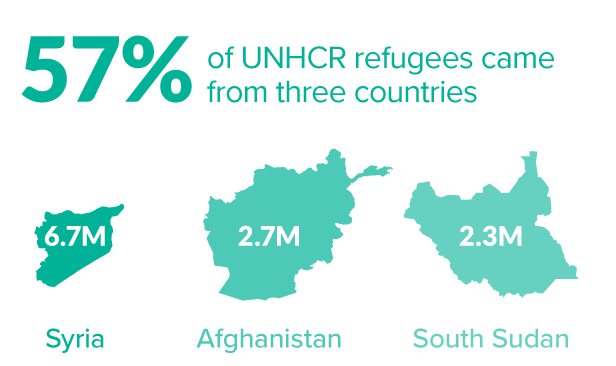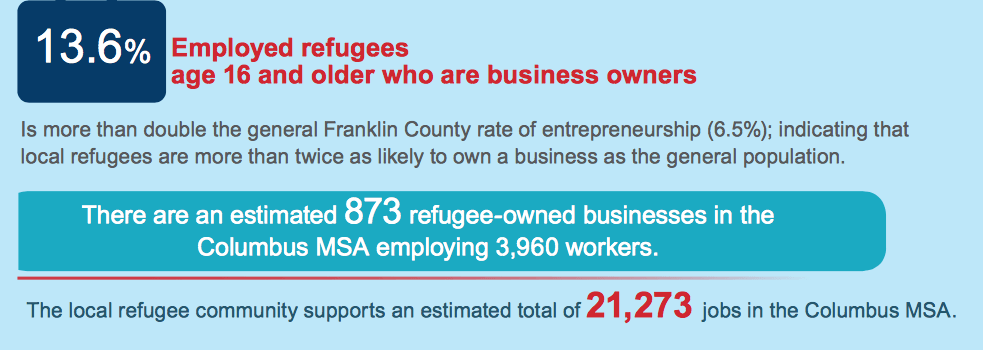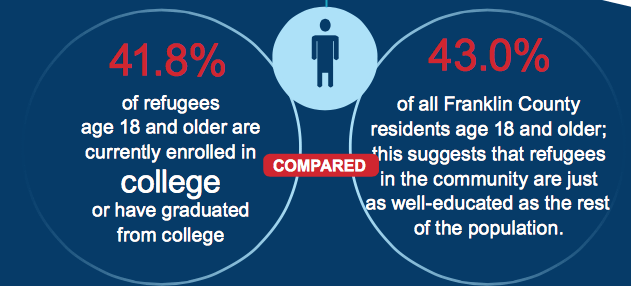Frequently Asked Questions
FAQs about Refugees
-
Individuals who have fled their countries of origin and who meet the United Nations’ criteria of having a well-founded fear of persecution for reasons of race, religion, nationality, membership in a particular social group, or political opinion.
-
Individuals apply for refugee status through the United Nations High Commission for Refugees (UNHCR) or U.S. Embassy while they are still outside of the U.S. After 2-3 years of thorough review of their application by the Department of Homeland Security, Health and Human Services, and Overseas Processing Entities, these individuals may be approved for refugee status. Every person with approved refugee status enters the U.S. legally. Every year in October, the President of the United States, in consultation with Congress, sets the ceiling for refugee admission to the U.S. for the fiscal year. In fiscal year 2016, the U.S. Government has pledged to accept 85,000 refugees (10,000 of these will be Syrian) and plans to accept 100,000 in fiscal year 2017.
-
Once approved for refugee status, refugees come to the U.S. through voluntary agencies (VOLAGS) who partner directly with the Department of State. These VOLAGS have affiliate offices – such as Community Refugee & Immigration Services, US Together, and World Relief – in cities across the nation. The VOLAGS allocate refugee cases to affiliate offices in local areas based on several factors: reunification of family members, the community’s capacity to work with certain ethnic groups (often based on language capacity), cost of living, employment opportunities.
CRIS is affiliated with one VOLAG: Church World Service (CWS).
-
CRIS’s resettlement program accomplishes the following services for each refugee case within a 90-day “Reception and Placement (R&P)” period: secure housing, set up housing with furniture and other basic necessities, including food and the Welcome Kit, greet refugee upon arrival at the airport and provide transportation to their new home, provide safety orientation, conduct intake and cultural orientation to their new community, assist them in getting a social security card, assist them with applying for public benefits, provide transportation to their health screening where they receive basic medical services, including blood work, immunizations, and physical exams, assist children in enrolling in school, assist adults with access to English as a Second Language (ESOL) classes, assist and enroll adults in employment readiness and search programs.
-
Refugees are fully authorized to work in the U.S. upon receipt of their social security card and a state identification card. CRIS has multiple Employment Counselors who assist refugees with all elements of finding employment, including: orientation to the U.S. job market, assistance with resumes, completion of job applications, transportation to interviews and sometimes to work, and orientation to their new job.
CRIS Employment Counselors have relationships with over 60 local employers who hire refugees regularly.
-
A refugee holds refugee status for a one-year period at which time they are required to adjust their status to Lawful Permanent Resident (LPR). Refugees can maintain this LPR status as long as they wish. Five years from the date of a refugee’s entry into the U.S. the refugee is eligible to apply for US citizenship, provided that refugee already went through the process to become a lawful permanent resident.
FAQs about Immigrants
-
A foreign-born individual who voluntarily leaves his/her country of origin and has been admitted to reside permanently in the U.S. as a Lawful Permanent Resident (LPR).
-
An individual who fears persecution based on race, religion, nationality or political opinion, but has already entered the U.S. and, fearing persecution if they return to their homeland, applies for and is granted asylum in the U.S. These individuals do not enter the United States as refugees. They may enter as students, tourists, businessmen, or even in undocumented status. Once in the U.S., or at a land border or port of entry, they apply through the Department of Homeland Security for asylum, a status that will acknowledge that they meet the definition of a refugee and that will allow them to remain in the United States.
-
A person who has already entered the U.S. but has not yet successfully completed the process to become an asylee.
-
A document from the Department of Homeland Security certifying lawful permanent resident status; also known as a permanent resident card, alien registration receipt card, or resident alien card. They are not necessarily green in color, but in the past all such cards used to be green.
-
The process of becoming a U.S. citizen after five years of lawful permanent residency in the U.S.
-
A Department of State document authorizing a non-U.S. citizen to enter and remain in the U.S. for certain periods of time and for certain purposes.






